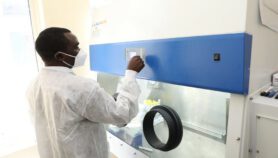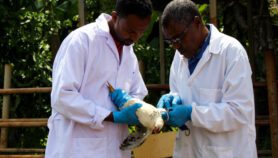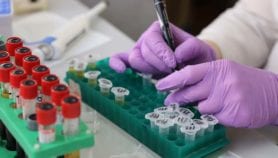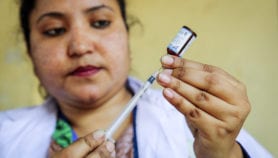By: John Barton
Send to a friend
The details you provide on this page will not be used to send unsolicited email, and will not be sold to a 3rd party. See privacy policy.
Suppose your institute wants to develop a new vaccine for use against a disease that is prevalent in developing nations. As you plan your strategy, you discover separate patents that cover:
- The genome of the pathogen you are attacking, with claims defining the formal legal scope of the patent that covers computer analysis of the genome sequence;
- The use of a specific epitope of the pathogen — the groups of amino acids that lie close together on the protein surface and determine its antigenicity — as the basis for eliciting an immune response (naturally this is the epitope that you’re hoping to use);
- The use of a specific human gene sequence as the basis for a diagnostic test to determine whether the person receiving the vaccine is likely to have a life-threatening reaction to the adjuvant you hope to use. (You’ve found the adjuvant especially valuable in animal trials, but some people react very negatively to it.); and
- The use of a specific formula which, if embodied in a computer program, can predict and analyse the dynamics of the immune response to the vaccine.
Each of these patents, however, does reflect important insight, and patents of these types may be significant incentives for research. They will encourage, respectively, genomic sequencing, the identification of epitopes that are useful as antigens, the search for genetic variations important to drug side-effects, and the development of sophisticated physiological models.
Typically, the companies interested in such patents are start-up biotechnology companies that hope to use them as bargaining tools when negotiating strategic alliances with pharmaceutical companies that might participate in the drug discovery process. Indeed, the business plans of such companies are based on this bargaining power.
What are your choices, assuming you still wish to develop the vaccine? One is to obtain licenses from all those holding the relevant patents. This may be expensive, however, both in license and legal negotiating costs. Indeed, it may even be impossible. Certain of the patents may already have been licensed on an exclusive basis to a developed-world pharmaceutical firm. Or the patent holder might fear that licensing in the developing world will undercut its developed world marketing strategy.
For example, if computer chips were subsequently designed to provide easy identification of the genetic sequences related to adjuvant susceptibility, even if they were intended primarily for use in the developing world, they might find their way back to the developed world, and either undercut the market there, or violate regulatory requirements.
You may, alternatively, choose to ignore the patents, particularly if you’re working only in the developing world, as patents only have legal significance in the country in which they are issued, and may therefore not cover the country in which you are carrying out your research. Indeed, you may have much more freedom to do research in the developing world than in the developed world!
This strategy won’t work, however, if parallel patents have in fact been issued in the developing world, particularly in larger and more important markets such as Brazil or China. Nor may it work if you’re interested in exporting your vaccine to the developed world, as the product of your research might be held to infringe some of the patents held there, such as that on use of the particular epitope.
In short, you may be stymied.
Does this imaginary example point to a real problem? We aren’t yet sure, although many believe that the analogous problem of overlapping patents is already becoming significant in agriculture, and there is at least anecdotal evidence providing a basis for concern in both medicine and agriculture.
If there does, as I suspect, turn out to be a major problem, how might we resolve it? Three possibilities come to mind. One is to devise new licensing arrangements. For example, perhaps in return for some public funding, holders of these basic patents would be asked to license them voluntarily for developing-world markets, with adequate arrangements to protect their licensees in developed world markets.
A second strategy might be to avoid issuing such patents. Traditionally, patent law has used the legal requirement to demonstrate utility, and to restrict patent to particular kinds of subject matter, to help distinguish between abstract principles that are considered non-patentable, and products or methods on which patents can be granted. Those principles might be applied more tightly.
A third alternative would be to revise the general approach to infringement embedded in patent legislation in a way that would make it easier to use such patented inventions in research, either freely or with a reasonable royalty on the final product.
Even within the developed world, a number of observers are now speaking of the danger of gridlock as a result of the growing number of what might be called ‘basic patents’, and a sharp debate is taking place between biotech start-ups holding patents such as those described above, and large pharmaceutical companies keen to maintain the freedom to carry out research. The implications for research and its applications in the developing world are even less clear. But they are likely to prove even more important.
The author is the ‘George E. Osborne’ Professor of Law, Stanford University, Stanford, CA 94305
E-mail: [email protected]













